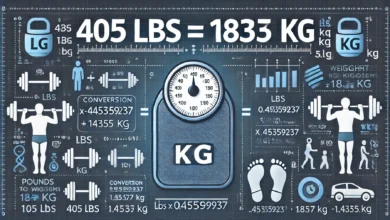Convert 256mm to Inches – Complete Guide

Understanding Millimeters and Inches
Millimeters and inches are both widely used units of length. A millimeter, abbreviated as “mm”, is a metric unit used globally, especially in science and engineering. On the other hand, inches belong to the imperial system, commonly used in the United States and a few other countries.
Although these systems differ in origin, conversion between them becomes crucial in many real-world scenarios. Whether you’re reading a technical document, crafting a piece of furniture, or adjusting machine parts, understanding how to convert 256mm to inches is essential.
The Formula to Convert 256mm to Inches
The standard formula to convert millimeters to inches is simple and universally accepted:
1 millimeter = 0.0393701 inches
To convert any millimeter value to inches, multiply the number of millimeters by 0.0393701.
For example:
256mm × 0.0393701 = inches
This formula gives you an exact numerical value, ensuring accuracy in your conversions.
Step-by-Step Conversion of 256mm to Inches
Let’s walk through the process of converting 256mm to inches.
- Step 1: Use the conversion formula:
256×0.0393701=10.0787406256 × 0.0393701 = 10.0787406256×0.0393701=10.0787406 - Step 2: Round the result (if needed):
256mm=10.08256mm = 10.08256mm=10.08 inches (rounded to two decimal places) - Step 3: Convert to a fraction (optional):
10.0810.0810.08 inches is approximately 1011310 \frac{1}{13}10131 inches.
Thus, 256mm is equal to 10.08 inches.
Common Conversion Mistakes to Avoid
Several mistakes can easily slip in during conversions. For instance:
- Relying on Rounded Values: While shortcuts can save time, rounding off constants like 0.039 instead of 0.0393701 can lead to significant errors.
- Inaccurate Calculators: Some free online tools may not display enough decimal precision.
- Misplacement of Decimal Point: A minor misplacement changes the value entirely.
Always double-check your math, especially when precision matters.
Real-Life Applications of 256mm to Inches
This conversion isn’t just for textbooks. Here’s how it’s used:
- Construction Projects: Floor tiles, windows, and doors are often measured in mm, while American plans may list them in inches.
- Engineering Blueprints: Mechanical parts often demand precision to the nearest millimeter.
- Product Design: Designers often use both units to align with global manufacturing standards.
Understanding this conversion ensures that professionals across different regions can work together effectively.
Metric vs Imperial: Why Conversions Matter
The metric system is logical and easy to scale, while the imperial system is deeply rooted in tradition. Although different, both systems are still in use today.
In professional environments, especially international ones, converting between these units becomes non-negotiable. Mistakes can lead to mismatched components, costly delays, or even safety risks.
Tools to Convert Millimeters to Inches
You don’t always need to convert manually. Several tools can simplify the process:
- Online Calculators: Just type “256mm to inches” into Google.
- Unit Conversion Apps: Apps like Unit Converter or ConvertPad do the job quickly.
- Conversion Charts: Great for quick access during manual work.
Using these tools ensures speed without compromising on accuracy.
Quick Millimeter to Inches Conversion Chart
| Millimeters (mm) | Inches (in) |
|---|---|
| 250 mm | 9.84 in |
| 255 mm | 10.04 in |
| 256 mm | 10.08 in |
| 260 mm | 10.24 in |
| 265 mm | 10.43 in |
This table helps visualize nearby values and offers a practical comparison.
Benefits of Knowing the Right Conversion
When you’re precise, you’re prepared. Here are a few benefits:
- Better Accuracy: No more mismatched cuts or dimensions.
- Improved Communication: Especially when working across countries.
- Efficient Planning: Ensures smoother workflow in projects.
Whether you’re a hobbyist or a professional, this skill adds immense value.
Frequently Asked Questions
1. How many inches is exactly 256mm?
256mm equals approximately 10.08 inches.
2. What is 256mm to inches in fractions?
It converts to roughly 10 and 1/13 inches.
3. Can I use 0.039 as a shortcut for conversion?
While you can, it’s less accurate. Always use 0.0393701 for precise results.
4. Is there an easy way to convert mm to inches without a calculator?
Yes, keep a printed conversion chart handy or use a mobile app.
5. Why do some countries still use inches instead of millimeters?
Tradition and legal standards influence measurement systems in countries like the USA.
6. Are online converters reliable?
Most are, but it’s best to use trusted sites or apps with good reviews.
Conclusion
Converting 256mm to inches might seem minor, but it holds significant value in real-world applications. From everyday tasks to professional designs, ensuring accurate measurement conversions can save time, prevent errors, and streamline communication.




